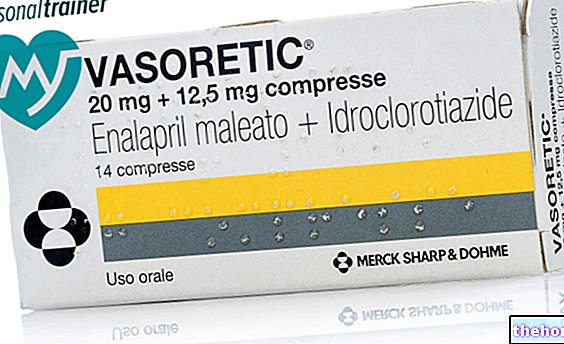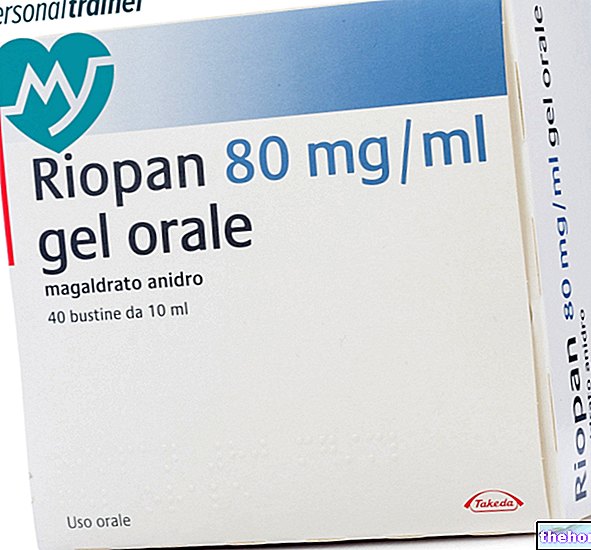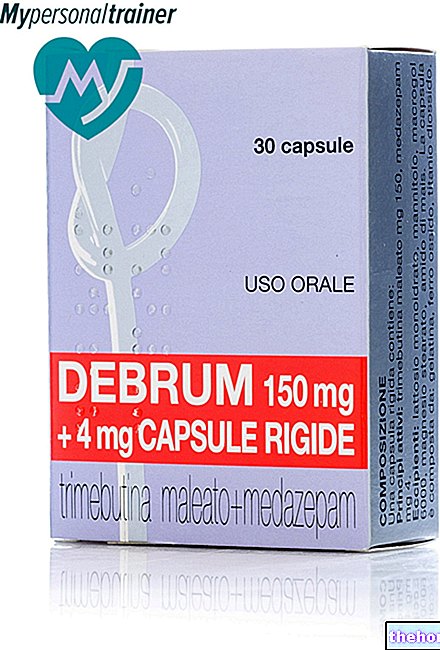Active ingredients: Atosiban
Tractocile 6.75 mg / 0.9 ml solution for injection
Tractocile package inserts are available for pack sizes:- Tractocile 6.75 mg / 0.9 ml solution for injection
- Tractocile 37.5 mg / 5 ml concentrate for solution for infusion
Why is Tractocile used? What is it for?
Tractocile contains atosiban. Tractocile can be used to delay the premature birth of your baby. Tractocile is used in adult women who are pregnant between the 24th and 33rd weeks of pregnancy.
Tractocile works by reducing the intensity of uterine contractions. It also slows the frequency of contractions. It works by blocking the effects of a natural hormone in the body called "oxytocin" that causes uterine contractions.
Contraindications When Tractocile should not be used
Do not use Tractocile:
- if you have been pregnant for less than 24 weeks
- if you have been pregnant for more than 33 weeks
- if you have water breakdown (premature rupture of membranes) after the full 30th week of gestation
- if the fetus has an abnormal heart rate
- if you have "vaginal bleeding which, in the doctor's judgment, requires immediate delivery
- if you have a condition called 'severe pre-eclampsia' which, in the doctor's judgment, requires immediate delivery. Severe pre-eclampsia is a condition in which you have high blood pressure, fluid retention and / or the presence of protein in the urine
- if you have a condition called "eclampsia" which is similar to "severe pre-eclampsia" but with the addition of seizures. This condition requires immediate delivery
- in case of fetal death
- if you have or are suspected of having a "womb infection" - if the placenta covers the birth canal
- in case of placental detachment from the uterus wall
- in any other condition for you or the fetus in which the continuation of the pregnancy is dangerous
- if you are allergic to atosiban or any of the other ingredients of this medicine (listed in section 6).
Do not use Tractocile if you are in any of the conditions described above. If you are not sure, ask your doctor, midwife or pharmacist before using Tractocile.
Precautions for use What you need to know before taking Tractocile
Talk to your doctor, midwife or pharmacist before using Tractocile:
- if you think you have had water rupture (premature rupture of the membranes)
- if you suffer from kidney or liver problems
- if the pregnancy is between the 24th and 27th week
- if the pregnancy is multiple
- if the contractions recur, treatment with Tractocile can be repeated 3 more times
- if the fetus is small compared to the stage of pregnancy
- after delivery, the uterus may have a reduced capacity to contract. This can lead to bleeding
- if you are pregnant with twins and / or are taking medicines that can delay the birth of your baby, such as medicines used for high blood pressure. These conditions can increase the risk of pulmonary edema (accumulation of fluid in the lungs).
If you have any of the above conditions, or if you are not sure, talk to your doctor, midwife or pharmacist before using Tractocile.
Children and adolescents
Tractocile has not been studied in pregnant women under the age of 18.
Interactions Which drugs or foods can modify the effect of Tractocile
Tell your doctor, midwife or pharmacist if you are taking, have recently taken or might take any other medicines, even those not prescribed, including herbal medicines.
Warnings It is important to know that:
Pregnancy and breastfeeding
If you are pregnant or breast-feeding for a previous birth, you should stop breast-feeding while being treated with Tractocile.
Dose, Method and Time of Administration How to use Tractocile: Posology
Tractocile is a medicine for hospital use only, which should only be given by your doctor, nurse or midwife. They will decide the amount needed for you and make sure the solution is clear, without particles.
Tractocile is given into a vein (intravenously) in three successive stages:
- The initial intravenous injection of 6.75 mg in 0.9 ml is slowly injected into a vein over one minute.
- Thereafter, a continuous infusion (drip) with a dose of 18 mg / hour is administered over a period of 3 hours.
- Subsequently, another continuous infusion (drip) with a dose of 6 mg / hour is administered for a maximum period of 45 hours, or until the uterine contractions have ceased.
The total duration of treatment should not exceed 48 hours.
Further courses of treatment with Tractocile may be used if the contractions recur. Tractocile treatment can be repeated three more times.
During treatment with Tractocile, your contractions and the heartbeat of the fetus may be monitored.
It is recommended that no more than three further courses of treatment be given during pregnancy.
Side Effects What are the side effects of Tractocile
Like all medicines, this medicine can cause side effects, although not everybody gets them. The undesirable effects observed in the mother were generally minor. There are no known undesirable effects in the fetus or neonate.
The following are the side effects that may occur with the use of this medicine:
Very common (occurs in more than 1 in 10 people)
- Malaise (nausea)
Common (occurs in less than 1 in 10 people)
- Headache
- Dizziness
- Flushes
- Feeling sick (vomiting)
- Acceleration of the heartbeat
- Lowering of blood pressure. Symptoms may include dizziness or light-headedness
- Injection site reaction
- Elevated blood sugar values
Uncommon (occurs in less than 1 in 100 people)
- High temperature (fever)
- Difficulty sleeping (insomnia)
- Itching
- Skin rashes
Rare (occurs in less than 1 in 1,000 people)
- Less ability of the uterus to contract after delivery. This can cause bleeding
- Allergic reactions
You may have difficulty breathing or pulmonary edema (accumulation of fluid in the lungs), particularly if you are pregnant in twins and / or are taking other medicines that can delay the birth of your baby, such as medicines used for high blood pressure.
If you get any side effects, talk to your doctor, midwife or nurse. This includes any possible side effects not listed in this leaflet.
Expiry and Retention
Keep this medicine out of the sight and reach of children.
Do not use this medicine after the expiry date which is stated on the carton after EXP {MM / YYYY}
The expiry date refers to the last day of that month.
Store in a refrigerator (2 ° C - 8 ° C).
Store in the original package to protect from light. Diluted solutions for intravenous administration must be used within 24 hours of preparation.
Do not use this medicine if you notice any particles and color change.
Other information
What Tractocile contains
- The active ingredient is atosiban.
- Each vial of Tractocile 6.75 mg / 0.9 ml solution for injection contains atosiban acetate, equivalent to 6.75 mg of atosiban in 0.9 ml.
- The other ingredients are: mannitol, hydrochloric acid and water for injections.
What Tractocile looks like and contents of the pack
Tractocile 6.75 mg / 0.9 ml solution for injection is a clear, colorless, particle-free solution.
One pack contains one vial containing 0.9 ml of solution.
The following information is intended for healthcare professionals only
Instructions for Use
Before using Tractocile, the solution should be examined to make sure it is clear and free from particles. Tractocile is administered intravenously in 3 successive stages:
- The initial intravenous injection of 6.75 mg in 0.9 ml is slowly injected into a vein over one minute.
- Thereafter, a continuous infusion with a dose of 24 ml / hour is administered over a period of 3 hours.
- Thereafter, a continuous infusion with a dose of 8 ml / hour is given for up to 45 hours, or until uterine contractions have subsided.
The total duration of treatment should not exceed 48 hours. Further courses of treatment with Tractocile may be used if the contractions recur. It is recommended not to carry out more than 3 further courses of treatment during a pregnancy.
Source Package Leaflet: AIFA (Italian Medicines Agency). Content published in January 2016. The information present may not be up-to-date.
To have access to the most up-to-date version, it is advisable to access the AIFA (Italian Medicines Agency) website. Disclaimer and useful information.
01.0 NAME OF THE MEDICINAL PRODUCT
TRACTOCILE 6.75 MG / 0.9 ML SOLUTION FOR INJECTION
02.0 QUALITATIVE AND QUANTITATIVE COMPOSITION
Each 0.9 ml vial of solution contains 6.75 mg of atosiban (as acetate).
For the full list of excipients, see section 6.1.
03.0 PHARMACEUTICAL FORM
Solution for injection (injection preparation).
Clear, colorless solution, without evidence of particles.
04.0 CLINICAL INFORMATION
04.1 Therapeutic indications
TRACTOCILE is indicated for delaying impending premature birth in pregnant adult patients with:
- regular uterine contractions lasting at least 30 seconds at a frequency of ≥ 4 every 30 minutes
- cervical dilatation from 1 to 3 cm (0-3 for nulliparous) and disappearance of the uterine neck of ≥ 50%
- gestational age from 24 to 33 full weeks
- normal heart rate of the fetus
04.2 Posology and method of administration
Treatment with TRACTOCILE should be started and continued by a doctor who specializes in the treatment of pre-term labor.
TRACTOCILE is administered intravenously in 3 successive stages: an initial bolus dose (6.75 mg), prepared with TRACTOCILE 6.75 mg / 0.9 ml solution for injection, followed immediately by continuous infusion of a high dose (infusion load 300 mcg / min) of TRACTOCILE 37.5 mg / 5 ml concentrate for solution for intravenous infusion for 3 hours and thereafter by a lower dose of TRACTOCILE 37.5 mg / 5 ml concentrate for solution for intravenous infusion (subsequent infusion 100 mcg / min) for a maximum period of 45 hours. The duration of the treatment should not exceed 48 hours. The total dose administered during a full course of TRACTOCILE therapy should normally not exceed 330.75 mg of atosiban.
Intravenous therapy by initial bolus injection should be started as soon as possible, as soon as the diagnosis of preterm labor has been made. Once the bolus administration has been made, proceed with the infusion (see Summary of Product Characteristics of TRACTOCILE 37.5 mg / 5 ml concentrate for solution for infusion). If uterine contractions persist during treatment with TRACTOCILE, alternative therapy should be considered.
There is no experience of treatment with atosiban in patients with impaired hepatic or renal function. No dose adjustment is anticipated in renal insufficiency as only a small amount of atosiban is excreted in the urine. In patients with hepatic insufficiency, atosiban should be used with caution.
The following table shows the complete posology of the bolus injection followed by the infusion:
Subsequent treatment
If subsequent treatment with atosiban is required, a bolus administration of TRACTOCILE 6.75 mg / 0.9 ml, solution for injection should be started again, followed by an infusion with TRACTOCILE 37.5 mg / 5 ml, concentrate for solution for intravenous infusion.
04.3 Contraindications
TRACTOCILE should not be administered in the following conditions:
- Gestational age below 24 or above 33 full weeks
- Premature rupture of membranes over 30 weeks of gestation
- Abnormal heart rate of the fetus
- Pre-birth uterine haemorrhage requiring immediate delivery
- Eclampsia and severe pre-eclampsia requiring delivery
- Intrauterine death of the fetus
- Suspected intrauterine infection
- Placenta previa
- Abruptio placenta
- Any other condition of the mother or fetus in which the continuation of pregnancy is dangerous
- Known hypersensitivity to the active substance or to any of the excipients.
04.4 Special warnings and appropriate precautions for use
When atosiban is used in patients in whom the possibility of premature rupture of membranes cannot be excluded, the benefits of delayed delivery and any risks from chorionamnionitis should be weighed.
There is no experience of treatment with atosiban in patients with hepatic or renal impairment. No dose adjustment is anticipated in renal insufficiency as only a small amount of atosiban is excreted in the urine. In patients with hepatic insufficiency, atosiban should be used with caution (see sections 4.2 and 5.2).
There is only limited clinical experience regarding the administration of atosiban in multiple pregnancies or in the gestational age group 24-27 weeks due to a small number of patients undergoing treatment. The benefits of atosiban in these subgroups are therefore uncertain.
Subsequent treatment with TRACTOCILE is possible, but clinical experience for multiple subsequent treatments is limited to a maximum of 3 further treatment courses (see section 4.2).
In the event of intrauterine growth retardation, the decision to continue or restart treatment with TRACTOCILE depends on the determination of the maturity of the fetus.
Uterine contractions and fetal heart rate should be monitored during administration of atosiban and if persistent uterine contractions occur.
Atosiban, as an oxytocin antagonist, could theoretically lead to uterine relaxation and postpartum blood loss, so postpartum blood loss should be controlled.
However, inadequate contractions of the postpartum uterus were not found in clinical trials.
04.5 Interactions with other medicinal products and other forms of interaction
Atosiban is unlikely to be involved in cytochrome P450-mediated drug interactions since studies in vitro demonstrated that atosiban does not represent a substrate for the cytochrome P450 system and does not inhibit the cytochrome P450 enzyme system responsible for drug metabolism.
Interaction studies were conducted with labetalol and betamethasone in healthy volunteer women. No clinically relevant interactions were observed between atosiban and betamethasone or labetalol.
04.6 Pregnancy and breastfeeding
Treatment with atosiban should only be used when preterm labor has been diagnosed between the 24th and 33rd week of complete gestation. If during pregnancy the woman is already breastfeeding for a previous birth, breastfeeding should be stopped during treatment with TRACTOCILE, since the release of oxytocin during breastfeeding can increase uterine contractility and thereby counteract the effects of tocolytic therapy.
The results of clinical studies with atosiban showed no effects on lactation.Small amounts of atosiban pass from the plasma to the breast milk of mothers.
The results of embryo-fetal toxicity studies did not reveal any toxic effects of atosiban. Studies referring to reproductive capacity and early embryonic development have not been conducted (see section 5.3).
04.7 Effects on ability to drive and use machines
Not relevant.
04.8 Undesirable effects
In clinical studies, possible adverse reactions related to the use of atosiban were observed in the mother. In total, 48% of patients treated with atosiban experienced adverse reactions during clinical studies. The observed adverse reactions were generally mild. The most frequently reported adverse reaction from mothers was nausea (14%).
In the newborn, clinical studies did not reveal any specific adverse reactions due to atosiban. Adverse reactions observed in the infant were within normal range and were comparable in incidence to those seen in the placebo and beta-mimetic groups.
The frequency of adverse reactions listed below is defined using the following convention: Very common (≥ 1/10); common (≥ 1/100,
04.9 Overdose
Rare cases of atosiban overdose have been reported, occurring without any particular signs or symptoms. There are no known specific treatments in case of overdose.
05.0 PHARMACOLOGICAL PROPERTIES
05.1 Pharmacodynamic properties
Pharmacotherapeutic group: other gynecologicals, ATC code: G02CX01
TRACTOCILE contains atosiban (INN), a synthetic peptide ([Mpa1, D-Tyr (Et) 2, Thr4, Orn8] -oxytocin) competitive antagonist of human oxytocin at the receptor level. The results of studies in rats and guinea pigs show that atosiban binds to oxytocin receptors to reduce the frequency of contractions and tone of the uterine muscles, resulting in suppression of uterine contractions. The ability of atosiban to bind to the vasopressin receptor, thereby inhibiting the effect of vasopressin itself, was also found. In animals, atosiban did not show cardiovascular effects.
In human pre-term labor, atosiban, at recommended doses, antagonizes uterine contractions and induces uterine quiescence. The uterine relaxation effect is rapidly established after administration of atosiban and contractions are significantly reduced within 10 minutes to then achieve stable uterine quiescence (≤ 4 contractions / hour) for 12 hours.
Phase III clinical trials (CAP-001 studies) were performed in 742 women diagnosed with pre-term labor between the 23rd-33rd week of gestation; the studies involved patients being randomly administered atosiban (according to the indicated dosing schedule) or a? -agonist (at the titrated dose).
Primary endpoint: The main endpoint for the evaluation of the efficacy of the product was the percentage of patients who within the first 7 days from the start of treatment had not given birth and had not required treatment with alternative tocolytics. The data show that 59.6 % (n = 201) and 47.7% (n = 163) of patients treated with atosiban and a? -agonist (p = 0.0004), respectively, were not having given birth and not having requested treatment with alternative tocolytics. Most of the failures recorded in the CAP-001 studies were due to low tolerability. Treatment failures due to insufficient efficacy were significantly (p = 0.0003) more frequent in patients treated with atosiban (n = 48, 14.2%) than in patients treated with? -Agonists (n = 20, 5.8 %).
In CAP-001 studies, the likelihood of not giving birth and not requiring alternative tocolytics within 7 days of starting treatment was similar in patients treated with atosiban and beta-mimetics during the 24th-28th week of gestation. However, these results are based on a very small sample (n = 129 patients).
Secondary Enpoints: Secondary efficacy parameters included the percentage of patients who had not delivered within 48 hours of treatment initiation. Regarding this parameter, no difference was found between the atosiban and beta-mimetic groups.
Mean (SD) gestational age at delivery was similar in the 2 groups: 35.6 and 35.3 weeks for the atosiban and a? -Agonist groups, respectively (p = 0.37). Neonatal Intensive Care (CIN) was similar for both treatment groups (approximately 30%), as were hospital stay data and ventilation therapy data. Mean (SD) birth weight was 2491 grams in group treated with atosiban and 2461 grams in the group treated with a? -agonist (p = 0.58).
There were apparently no differences in fetal and maternal outcome between the atosiban and? -Agonist groups, but clinical trials were not large enough to rule out a possible difference.
Of the 361 women who received atosiban treatment in the phase III studies, 73 underwent at least one subsequent treatment, 8 underwent at least 2 subsequent treatments, and 2 received 3 subsequent treatments (see section 4.4).
Since the safety and efficacy of atosiban in women with gestational age less than 24 full weeks have not been established in randomized controlled clinical trials, treatment with atosiban in this patient group is not recommended (see section 4.3).
In a placebo-controlled study, the number of fetal / infant deaths was 5/295 (1.7%) in the placebo group and 15/288 (5.2%) in the atosiban group. Of these, 2 occurred at 5 and 8 months of age. Eleven of the fifteen deaths detected in the atosiban group are related to pregnancies with gestational age between the 20th and 24th week. It should be noted that the distribution of women aged less than 24 weeks was not homogeneous (19 in the atosiban group and 4 in the placebo group).
There was no difference in mortality rate in women over 24 weeks of gestational age (1.7% in the placebo group and 1.5% in the atosiban group).
05.2 Pharmacokinetic properties
Steady state plasma concentrations, assessed by infusion of atosiban (10 to 300 mcg / min over a period of 12 hours) in healthy non-pregnant subjects, increase in proportion to the administered dose.
Clearance, volume of distribution and half-life were found to be independent of the administered dose.
Infusion of atosiban (300 mcg / min over a period of 6-12 hours) in pregnant women with preterm labor results in steady state plasma concentrations being reached within 1 hour of the start of the infusion (mean value 442 ± 73 ng / mL, with range from 298 to 533 ng / mL).
At the end of the infusion, plasma concentrations fall rapidly with an initial (T?) And final (T?) Half-life of 0.21 ± 0.01 and 1.7 ± 0.3 hours, respectively. The mean clearance value is 41.8 ± 8.2 liters / h. The mean volume of distribution is 18.3 ± 6.8 liters.
In pregnant women, atosiban is 46-48% bound to plasma proteins. It is not known whether the free fraction in the maternal compartment differs substantially from the fetal one. Atosiban does not distribute in red blood cells.
Atosiban passes the placental barrier. Following infusion of 300 mcg / min in healthy full-term pregnant women, the fetus / maternal concentration ratio of atosiban is 0.12.
2 metabolites have been identified in the plasma and urine of human subjects. The ratio of plasma concentrations of the main metabolite M1 (des- (Orn8, Gly-NH2 9) - [Mpa1, D-Tyr (Et) 2, Thr4] -oxytocin) and atosiban is 1.4 and 2.8 at the second hour and at the end of the infusion, respectively.
It is not known whether M1 accumulates in the tissues. The presence of atosiban has been found in the urine only in small quantities and its urinary concentration is approximately 50 times lower than that of M1. The percentage of atosiban excreted in faeces is not known. The major metabolite M1 is approximately 10 times less potent in inhibiting than atosiban in vitro uterine contractions induced by oxytocin. The metabolite M1 is excreted in milk (see section 4.6).
There is no experience of treatment with atosiban in patients with hepatic or renal impairment. No dose adjustment is anticipated in renal insufficiency as only a small amount of atosiban is excreted in the urine. In patients with hepatic insufficiency, atosiban should be used with caution (see sections 4.2 and 4.4).
Atosiban is unlikely to inhibit hepatic cytochrome P450 isoforms in humans (see section 4.5).
05.3 Preclinical safety data
The toxicity studies, conducted in rats and dogs, administered intravenously for 2 weeks doses approximately 10 times higher than the therapeutic dose in humans and for 3 months, doses up to 20 mg / kg / day by the sc route, did not showed systemic toxic effects. The higher dose of atosiban, administered subcutaneously, which resulted in no systemic adverse reactions, was approximately 2 times higher than the therapeutic dose used in humans.
Studies referring to reproductive capacity and the early stages of embryonic development have not been conducted. Toxicity studies on reproductive capacity with administrations from the embryo implantation stage up to the last stages of pregnancy have shown no effect on either the mothers or the fetuses. Rat fetuses were exposed to a dose approximately 4 times higher than that to which human fetuses were exposed during intravenous infusion in pregnant women. Studies in animals have shown inhibition of lactation resulting, as expected, from "inhibition of" action of oxytocin.
Atosiban did not show either oncogenic or mutagenic effects in the tests performed either in vitro is in vivo.
06.0 PHARMACEUTICAL INFORMATION
06.1 Excipients
Mannitol
1M hydrochloric acid
Water for injections.
06.2 Incompatibility
In the absence of compatibility studies, the medicinal product must not be mixed with other products.
06.3 Period of validity
4 years.
Once the vial has been opened, the product should be used immediately.
06.4 Special precautions for storage
Store in a refrigerator (2 ° C - 8 ° C).
Store in the original package to protect from light.
06.5 Nature of the immediate packaging and contents of the package
One vial contains 0.9 ml of solution for injection, corresponding to 6.75 mg of atosiban.
Clear, borosilicate (type I) glass vial sealed with gray type I siliconised bromobutyl rubber stoppers and with a polypropylene and aluminum metal flip-off cap.
06.6 Instructions for use and handling
Before proceeding with administration, visually check the vials for the presence of any foreign particles and the lack of clarity of the solution.
Preparation of the initial intravenous injection:
withdraw 0.9 ml from a vial, labeled 0.9 ml, of TRACTOCILE 6.75 mg / 0.9 ml solution for injection and administer the dose as a slow intravenous bolus for one minute, under strict medical supervision in the obstetrics ward. TRACTOCILE 6.75 mg / 0.9 ml, solution for injection, should be used immediately.
07.0 MARKETING AUTHORIZATION HOLDER
Ferring Pharmaceuticals A / S
Kay Fiskers Plads 11
2300 København S
Denmark
08.0 MARKETING AUTHORIZATION NUMBER
EU / 1/99/124/001
035026018
09.0 DATE OF FIRST AUTHORIZATION OR RENEWAL OF THE AUTHORIZATION
First authorization: 20.01.2000
Last renewal of the authorization: 20.01.2010
10.0 DATE OF REVISION OF THE TEXT
05.08.2011




























